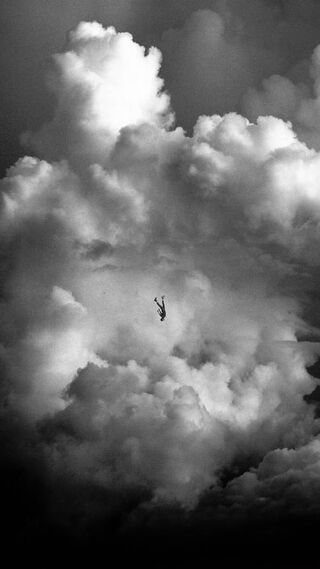Fear
How Fear Distorts What We Know
Part 1 of 2 In an ongoing series on “Deconstructing Anxiety.”
Posted February 4, 2021 Reviewed by Hara Estroff Marano
“My life was filled with terrible misfortunes...most of which never happened” — De Montaigne

In our last post, we talked about the five deceptions of fear. In addition to its deceptions, fear also manipulates our perception, distorting the objective truth of things. In so doing, it throws fantastic images before our eyes and otherwise twists our understanding of who we are and what the world is all about.
The reality we perceive when fearful is necessarily a distortion (for fear will not allow us to see those aspects of truth that we find too threatening). We’ve all had experiences where the distortion becomes extreme, a grotesque mockery of objectivity, so very different from ordinary perception.
If we deconstruct and thereby expose these manipulations of fear, we can more readily see that they are, in fact, manipulations, “illusions,” with no ultimate validity. This makes it possible to begin to mistrust our fear, poking holes in its pretense, and developing the conviction that our experience of it is not absolute and fixed after all. In short, we begin to see that fear is not “real.”
There are, in the “Deconstructing Anxiety” model, eight manipulations of fear, eight primary ways it distorts our perception, including:
- The hypnotizing effect of fear,
- The lie of fear,
- The demand of fear,
- The ruminative quality of fear,
- The impatience of fear,
- The future orientation of fear,
- The time distortion of fear, and
- The self-generating quality of fear.
In this post, we will talk about the first four of these manipulations and finish with the second four in our next post (coming out within a couple of weeks).
1. The Hypnotizing Effect of Fear
Fear is a master hypnotist. It creates a sort of trance wherein we stare in horrible fascination at all that we imagine could go wrong. Our rational self, that which would otherwise consider a variety of alternate responses, seems to go to sleep. We react automatically without considering these options at all, compelled to make drastic assumptions of catastrophe, ruin, and devastation.
It’s as if fear throws up an impenetrable wall before our eyes, upon which we project endless images of disaster. The effect of this is that we never ask the one question that would completely undo the fear: What is on the other side of the wall? What happens when the problem has passed? We forget there is a much greater reality on the other side with a vast array of options for how to think about and respond to the situation.
2. The Lie of Fear
Fear also makes us believe that the many possible things that could go wrong in a situation will all happen at once. As we hold these possibilities in mind, we feel an anxious need to prepare for each of them at the same time. This is completely overwhelming and paralyzing. A kaleidoscope of images fills our mind as we desperately try to keep track of all possible threats . . . and anxiously look for others we may not have accounted for. The Buddhists have an interesting phrase that describes this phenomenon: our minds are like “a drunken monkey stung by a bee.”
Exposing this lie reveals that the threatening situation never plays out as we imagined it would. If the problems we were afraid of do come to pass (and, research shows, most will not), they do so one at a time and are managed one at a time. The idea that we will have to fight off a thousand enemies at once is, quite simply, a lie.
3. The Demand of Fear
Fear demands that we try to do something about it—to avoid it, fix it, change it, or somehow make it go away. We never consider the possibility of ignoring it or engaging our attention in some other activity. As above, this magnifies our anxiety. Our response to this demand of fear refreshes our projections of danger, and we end up more afraid. The fear then increases its demand that we do something about it, and the process cycles round and round.
4. The Ruminative Quality of Fear
Next is the ruminative quality of fear. Fear makes us review, ceaselessly and tortuously, all its frightening possibilities. This is connected to the hypnosis and the lie of fear. Not only do we have to stare at and be aware of all the possible threats at once, we must keep reviewing them for extra insurance that we haven’t missed anything. And we do this to try to satisfy the demand of fear—by reviewing the situation over and over we hope to find a way to get it under control, that it may never threaten us again. The attempt, of course, is futile. What’s more, it requires that we continuously fill our minds with fear. Each time we fail to achieve a guarantee of control, we become more anxious.
In our next post, we will delineate the final four manipulations of fear and show how a careful deconstruction of them can begin the process of setting oneself free.
(Edited excerpt from Deconstructing Anxiety: the Journey from Fear to Fulfillment by Todd Pressman, Ph.D., Rowman, and Littlefield Publishers. All rights reserved).




